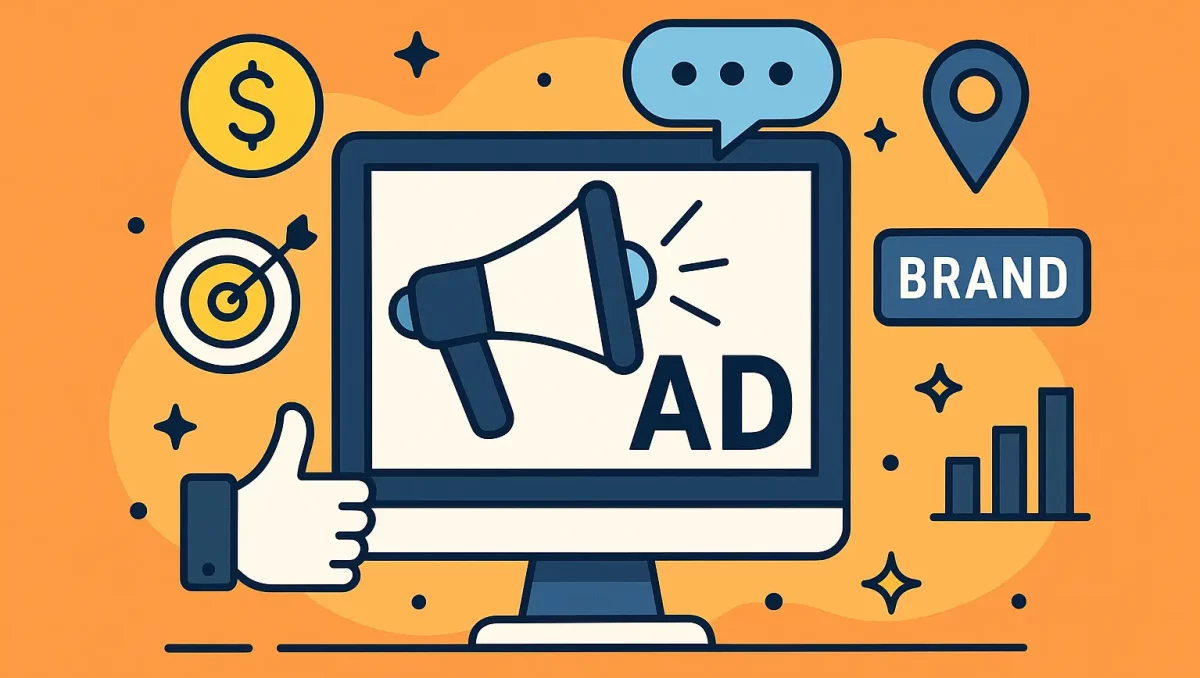I’m Kayla. I sell tech gear on a GSA Schedule. I’m a real person who sends quotes, chases POs, and drinks cold coffee by 9 a.m. I’ve spent my own money on GSA advertising. I’ve also spent weekends fixing product pages on GSA Advantage. So here’s my take, straight from my desk.
First, what I mean by “GSA advertising”
I used three paths:
- GSA Advantage page work (titles, photos, specs).
- eBuy alerts and replies (RFQs from agencies).
- Paid ads aimed at federal buyers (LinkedIn and Google Search).
Different roads. Same goal: get seen by folks with a .gov or .mil email who can buy.
If you want a deeper dive into this playbook, the case studies over at HuntMads break down federal-buyer campaigns in gritty detail. For an especially relevant read, check out their breakdown of GSA advertising—what they tried, what worked, and what flopped to see how my playbook stacks up.
Real example 1: LinkedIn ads that actually paid off
Last August and September (Q4 rush), I ran LinkedIn ads. I aimed them at people with titles like Contract Specialist, Program Manager, and IT Lead in DC, Maryland, and Virginia.
My ad copy said: “Rugged Tablets on GSA. Contract GS-XXF-XXXXX. MIL-STD-810H. TAA compliant.” Short. Plain. It showed a product photo and a “Request GSA Quote” button.
- Budget: $2,500 total over 6 weeks.
- Avg cost per click: $7.84.
- Clicks: 321.
- Form fills: 28 (we asked for name, agency, .gov email, and a notes box).
- RFQs from that: 11.
- Awards: 3.
- Booked revenue: $118,400 across two agencies and one base.
- Biggest surprise: folks liked seeing the contract number in the ad. CTR ticked up when I added it.
For a broader perspective on what resonates with federal decision-makers scrolling through their LinkedIn feed, Orbiter Marketing’s breakdown of what government buyers look for in LinkedIn ads is worth a skim.
Was it perfect? No. Five leads had Gmail or Yahoo. Two ghosted me after asking for “ballpark only.” But the wins covered the noise. I’d do it again. I later compared my in-house effort with someone who actually hired a display advertising agency and documented what happened—their lessons on creative control and pacing echoed my findings.
Real example 2: Fixing GSA Advantage pages changed my week
I sell one tablet that used to get lost in search. The title was a mess. No clean model name. No clear use. Pictures were dim. I took a day to fix all that.
What I changed:
- Title: “Rugged 10” Tablet, 8GB/128GB, MIL-STD-810H, GSA.”
- Photos: bright front/back shots and a simple callout image (ports labeled).
- Bullets: short specs, weight, battery life, TAA note, warranty.
- Part numbers matched what I quote. No tricks.
The next month:
- Page views went from about 400 to 1,200.
- “Add to cart” showed up more often (we saw it on the order report).
- One school district used Cooperative Purchasing to buy six units. Small, but real.
I’ll be honest. Updates took time to post. A few images got rejected for size. But once they stuck, they helped.
Real example 3: Google Search ads—hit and miss
I tried Google Ads for “GSA tablets,” “GSA rugged laptop,” and “GSA schedule 33411” type searches.
- Budget: $600 over 3 weeks.
- Avg CPC: $2.10.
- Clicks: 258.
- Conversions: only 5 form fills.
Why so low? Two things. Many searches were general. And the landing page asked users to create an account before they could see price. Some left right away. When I switched to a simple page with a spec sheet and a “Request GSA Quote” button, conversion got better. Not great. But better. That mirrors the takeaway from HuntMads’ experiment where they tested the best internet advertising so you don’t waste your budget. Even though the author was selling supplements, their notes on ad policy pitfalls in the post on how they actually advertise supplements on Google—what worked, what flopped saved me a headache with restricted terms. Before you dip a toe into that world—imagine, for instance, you start carrying a nutraceutical like shilajit that’s touted for testosterone support—reviewing the actual research summarized here will clarify what the science really says and help you craft compliant, credibility-building ad copy. And if you think supplements face tight rules, adult-service sites climb an even steeper hill; the backstory of how Erotic Monkey navigated an outright advertising ban is a crash course in surviving blacklists—see the case study here for the specific tactics they used to stay visible without mainstream ad networks, which can spark ideas for alternative channels should your own offers ever get flagged.
Would I keep Google? Maybe for exact match terms like [GSA rugged tablet] and [GS-XXF-XXXXX quote]. Broad keywords ate cash fast.
eBuy: the fast lane when it pops, the slow lane when it doesn’t
I keep a watch list for our SINs. When a match hits, I reply the same day. If you wait two days, someone else catches it.
My eBuy notes:
- Fast, clean quotes win. One page, clear price, delivery, warranty.
- Attachments matter. They scan them. Title your files well.
- Sometimes invites feel random. You’ll see buys you can’t do. That’s life.
- September gets wild. Set time aside. I eat lunch at my desk that whole month.
We won a small RFQ from a VA clinic off eBuy by answering in under 3 hours. They told me speed was the reason. Simple as that.
What I liked
- The GSA tag builds trust. When the ad showed my contract number, click rate went up.
- Fiscal year end (Q4) is a rocket. More views, more RFQs, more awards.
- GSA Advantage cleanup gave steady wins. Not flashy, but steady.
What bugged me
- Page updates can be slow. Some photo rules are picky.
- LinkedIn leads with personal emails wasted time.
- Google Ads can burn money if your keywords are wide or your page asks too much.
- On eBuy, one tiny error can sink a quote. I once forgot a part number. We lost.
What I’d tell a friend who’s starting
If you’re still wrapping your head around how LinkedIn fits into the federal capture process, GrowFedBiz’s guide on using LinkedIn to win government contracts breaks down profile tweaks and connection strategies that pair nicely with the ad tactics above.
- Put your contract number in ad copy and on the image. Buyers look for it.
- Use a simple landing page. One product. One spec sheet. One “Request GSA Quote” button.
- Ask for .gov or .mil email first. It saves you hours later.
- Run ads 8 a.m.–5 p.m. Eastern on weekdays. That’s when buyers click.
- Keep keywords tight. Use exact match for your SIN and product name.
- Track with UTM tags and check GA4 weekly. Don’t guess. Adjust.
- Fix GSA Advantage titles and photos before you spend on ads. It multiplies every other effort.
Little things that made a big difference
- I added “Ships in 5 business days” on the product page. Calls went down. Orders went up.
- I wrote a one-page PDF: “How to Buy Through GSA (Quick Steps).” It got shared inside one agency.
- During a budget freeze scare, I paused ads and moved spend to the last two weeks of September. Better timing, better leads.
My verdict
GSA advertising can work. It’s not magic. It needs quick replies, clear pages, and clean copy. For me, LinkedIn during Q4 plus strong GSA Advantage pages did the heavy lifting. Google helped a bit with tight keywords. If you’re weighing modern channels beyond Google and LinkedIn, skim HuntMads’ field test where they tried modern ads so you don’t waste your budget—it’s a quick gut check before you swipe your card.
Would I recommend

